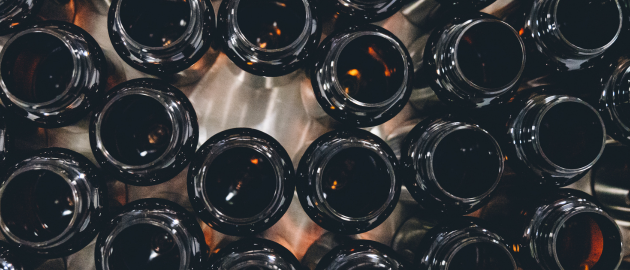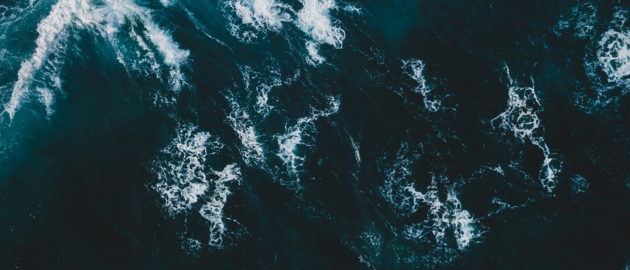When we count our blessings we shouldn’t forget our bacterial blessings and the biochemistry they bring to our bodies and health! We humans are but just a scaffold for the 100 trillion bacteria residing on and in our bodies. These bacteria, which make up your microbiota, are an ensemble of microorganisms living upon every nook and cranny of your 30 foot long GI tract, on all of your mucosa (eyeballs, sinuses, vagina, mouth), on your exterior, and deep within the layers of your skin including the mammary glands. Breastmilk is not sterile but filled with both fiber and flora that seed the next generation for longevity and robustness.1 Your microbiota weighs almost as much as your brain, 2.5 lbs. Like your brain, the bacteria shape human behavior, regulate neuroactive compounds and produce neurotransmitters. Some gut-brain researchers suspect their biochemistry may produce bliss, calm and happiness. The very feelings we aim to achieve as we spend time with friends and family during the holidays and as we embark upon a new year.
YOUR MICROBIOME: Intestinal Flora
Let’s begin with a quick overview of the human microbiome. The genes within the human microbiota, referred to as the microbiome, far outnumber our chromosomes. The human genome is one lone cog in a large, bustling factory compared to the genomes of 100 trillion bacteria. Over many millennia, humans and the microbiome have merged into a super-organism functioning as one. Together, the inter-reliance on one another may be one of the most important factors marking the ascendance of Homo sapien as the prime species of the planet. Perhaps, now more than ever it is important to recognize how deep this alliance was forged over evolutionary time. Our mitochondria (powerhouses of fat metabolism and energy production) were once (endocytosed) small bacteria. Many of our human genes are versions, in other words, homologs, of bacterial genes.2 If we damage the bacteria with which we were born by overuse of antibiotics or antibacterial soaps, then indirectly we may be damaging our own health in the long run.4 5
Another way we are permanently disrupting their passage from generation to next generation is by preventing their transfer during vaginal births as the rise of worldwide Cesarean section surgeries climbs annually.6
WHAT WOULD HAPPEN IF WE HAD NO GUT MICROBIOTA AT ALL?
Researchers Montiel-Castro et al have hypothesized that without the microbiota, Homo sapiens would not have developed the high level of cognitive performance and superior emotional tapestry that we currently enjoy.7 Germ-free animals, which are bred and raised to be sterile and have no gut microbiota, have distinctly inhuman characteristics: disrupted sociability, autistic like behavior, poor cardiac output, atrophied organs (heart, liver, and brains), constant feeding behavior, and, ironically, poor gain of both lean muscle and body adipose. I believe these type of sterility experiments illustrate how host function and form suffer inexplicably when vital microbes are missing. The role these vital microbes play in our health include producing various cofactors, vitamins and fats. They train and condition the immune system to be strong and resilient. Perhaps foremost in the fight against disease, is the microbiome’s foundational flora.
WHAT ARE FOUNDATIONAL FLORA FOR HUMANS?
The foundational flora form the ‘brakes’ on pathogen invasion which inevitably each animal, insect or fish on Earth encounters in daily living. Opportunistic members attempt to colonize our mucosal membranes and intestinal tract, attempting to gain entry and cause disease. Imagine your Tesla or Prius was missing ¼ or ⅓ of the braking system. How would you fare driving down a curvy hill or on a busy street? If your brakes were broken, you would certainly get them fixed in a hurry. The same care should be taken for your foundational flora.
Unlike environmental or soil microbiomes which have 60-70 different phyla of bacteria, over 95% of the healthy human microbiota is composed of only 3 selective, human specialist phyla: Bacteroidetes, Firmicutes, and Actinobacteria. Actinobacteria are generally the lowest percent in the gut and Bacteroidetes and Firmicutes share a split of about 40/60 to 20/80. Studies that compare healthy human subjects with disease-bearing subjects provide the best clues to the composition of the foundational flora in humans.8 9
In 2009, Julien Tap and his colleagues produced one of the best summaries of the intestinal phylogenetic core microbiota by studying the flora in 17 healthy omnivores and vegetarians from France and Netherlands. 66 dominant strains were found to be in the core of nearly all healthy microbiotas. The eight most prevalent species groupings (OTUs) were: Faecalibacterium prausnitzii, Bacteroides vulgatus, Roseburia intestinalis, Ruminococcus bromii, Eubacterium rectale, Coprobacillus, Alistipes putredinis, and Bifidobacterium longum.
BACTEROIDETES
Bacteroidetes has several main classes of Gram negative bacteria including the largest, Bacteroides, which ferment an enormous repertoire of complex plant fiber, carbohydrates, oligosaccharides and polysaccharides of both food and mucus side chains. They are commonly found in animals, environment, oceans, and soil. Predominantly Bacteroidetes are disease protective. Bacteroides is found low or depleted in nearly all the diseases of Western civilization.
ACTINOBACTERIA
Actinobacteria contains Gram positive Bifidobacteria, environmental and some skin related flora. This grouping experiences the greatest disruption after Cesarean section surgery. Instead of being blanketed with Mother’s Bifidobacterium and Bacteroides after vaginal birth, the gut microbiota of C section babies are colonized by Corynebacterium and Propionibacterium (from Actinobacteria) from sources such as skin flora of health care workers, hospital surfaces and mom and dad’s skin.10 Staphylococcus and Clostridium difficile hitchhike their way into baby too.
FIRMICUTES
Firmicutes is a diverse mix of almost 300 Gram positive genera from 3 main groups: anaerobic Clostridia, Bacilli, and Mollicutes. Firmicutes carries many of our disease protective foundational flora such as Faecalibacterium, Ruminococcus, Roseburia, Eubacterium and Lactobacilli. Beneficial Firmicutes are involved with raw material uptake and fermentation of fiber into short chain fatty acids which feed the colonocytes.
In the diseases of Western civilization, these ‘beneficial’ Firmicutes are missing and ‘opportunistic’ Firmicutes are overgrowing and associated with metabolic endotoxemia.11 When a warm, cozy house is empty and welcoming, then naturally hungry vagrants will move in! This potentially adverse group includes hardy, toxin-secreting pathogens involved in obesity, skin disorders, allergies, infant colic, autism, autoimmunity and neurodegenerative disorders. These members include Staphylococcus, Streptococcus, Enterococcus and butyrate pumping Clostridium cluster I; these opportunists bloom and cause endotoxemia on diets containing sugar, refined starches, and raw/uncooked starch.12 13 14 15
WHAT IF THE FOUNDATIONAL FLORA THAT FORTIFY AND PROTECT HUMAN HEALTH AND ORGANS WERE NEARLY EXTINCT?
Sadly this is what studies in the medical literature suggest and what I observe on hundreds of gut tests. Large groups of foundational flora such as Bacteroides and Bifidobacterium longum are in low abundance or completely missing, particularly after treatment for childhood ear infections, Strep throat, teen acne and adult Lyme disease. Their deficiency appears to correspond to damaged or suboptimal health.
REPAIRING THE EFFECTS OF MODERN LIVING: Microbiome and Modern Living
Due to the use of antibiotics and modern living patterns, the foundational flora appear to erode. We no longer eat locally or mingle with local organic farms, farm animals and neighborhood gardens. This limits our access to the quantity and diversity of environmental and soil microbiomes that ancestrally recharged our ‘bacterial batteries’, so to speak. When the gut microbiome is damaged and broken by antibiotics, poor diets, and low fiber food, it is not always simple to repair. Fortunately we have many successful tools and testing to direct this challenge. You may want to consider examining how your foundational flora are faring, which phyla, families or bacterial functions are missing, and what potential opportunistic pathogens are on the radar.
HOW CAN WE REPLENISH LOST OR OUT OF BALANCE FOUNDATIONAL FLORA?
When the foundational flora are replenished via probiotics, prebiotics and diet, we observe profound health turnarounds and changes such as improved sleep, resolution of joint pain and headaches, smoother digestion, happiness, calm, gain in strength, loss of body fat, improved adrenal/thyroid health, and reversal of autoimmunity or inflammatory diseases.
COMMENSAL BACTERIA ENJOY FEASTS TOGETHER TOO!
“Cum mensa” is Latin for “eating together” and the term commensal bacteria is derived from this. Commensal bacteria are the foundational flora. When we enjoy our meals with family and friends, think about the microbial allies you are feeding and fueling as well. In a healthy, disease-free gut microbiota, studies show a high abundance of commensal flora and very low amounts of potentially opportunistic candida, fungi, protozoa, parasites and pathogenic bacteria.
The importance of a “healthy” lifestyle in its broader sense—including breast lactation, a healthy diet… appropriate antibiotic use—cannot be overemphasized and may ensure a friendly gut microbiota, positively affecting metabolic outcomes. A concept that can be drawn from available studies is that the nutrient value of food is a relative and not an absolute term that can be influenced by our microbiome’s metabolic activity. Conversely, our food choices may imprint into inner intestinal metabolome by affecting the structure and activity of the gut microbiota.” —Musso G et al. 2010. “Obesity, diabetes, and gut microbiota the hygiene hypothesis expanded?16
SEEDING AND FEEDING FOR MICROBIOME HEALTH
Feeding the flora means nourishing them with diverse foods but may even include replenishing their network of bacterial friends which feed them like the Bacteroides-Bifidobacterium commensal ‘feast together’ system. Nourishing the foundational flora also means supplying diverse textures, rainbow colors (polyphenols) and fresh fruits and vegetables from local, organic sources that help them to be at their best and most diverse. Ideally our organic produce is not triple sterilized devoid of local soil organisms and stored in airtight plastic bags! Diverse fiber supplements, probiotic and prebiotic supplements are also ways to boost the microbiome or to bring it to a level of ancestral, pre-antibiotic optimality. Although genetics, age, gender and geography may help shape our microbiome, ultimately what we eat-drink-touch-breathe determines the composition of the gut.
Don’t forget to replenish your microbiome and give thanks to the microbial magic and bacterial blessings in your belly!
Article Contributed By Dr. Grace Liu of The Gut Institute
About the Author:
Grace Liu, PharmD, AFMCP is a functional medicine practitioner and frequent speaker at conferences such as the Ancestral Health Symposium and Paleofx. She leads a popular podcast, Gut Guardians and can be found on the web by her nickname, “The Gut Goddess”.
While Dr. Grace’s expertise is in the pharmaceutical world, she explores the various scientific, nutritional, and pharmacological ins and outs of optimal health through The Gut Institute and her private practice. Her training includes 4 years in plant biology, bachelor in nutritional science and food science, doctorate in pharmacy, and Crossfit Nutrition Certified by Robb Wolf (and Nicki Violetti).
Dr. Grace is available for private consultations. Contact her at The Gut Institute.
References
- 1. Munyaka, Peris Mumbi, Ehsan Khafipour, and Jean-Eric Ghia. “External influence of early childhood establishment of gut microbiota and subsequent health implications.” Frontiers in pediatrics 2 (2014)
- 2. McFall-Ngai, Margaret et al. “Animals in a bacterial world, a new imperative for the life sciences.” Proceedings of the National Academy of Sciences 110.9 (2013): 3229-3236.
- 4. Hernández, Ester et al. “Functional consequences of microbial shifts in the human gastrointestinal tract linked to antibiotic treatment and obesity.” Gut Microbes 4.4 (2013): 306-315 3Flint, Harry J. “Microbiology: Antibiotics and adiposity.” Nature 488.7413 (2012): 601-602
- 5. Cho, Ilseung et al. “Antibiotics in early life alter the murine colonic microbiome and adiposity.” Nature 488.7413 (2012): 621-626
- 6. Mueller, Noel T et al. “Prenatal exposure to antibiotics, cesarean section and risk of childhood obesity.” International Journal of Obesity (2014)
- 7. Montiel-Castro, Augusto J et al. “The microbiota-gut-brain axis: neurobehavioral correlates, health and sociality.” Frontiers in integrative neuroscience 7 (2013)
- 8. Turnbaugh, Peter J et al. “A core gut microbiome in obese and lean twins.” Nature 457.7228 (2009): 480-484
- 9. Joyce, Susan A, and Cormac GM Gahan. “The gut microbiota and the metabolic health of the host.” Current opinion in gastroenterology 30.2 (2014): 120-127
- 10. Munyaka, Peris Mumbi, Ehsan Khafipour, and Jean-Eric Ghia. “External influence of early childhood establishment of gut microbiota and subsequent health implications.” Frontiers in pediatrics 2 (2014)
- 11. Cani, Patrice D et al. “Metabolic endotoxemia initiates obesity and insulin resistance.” Diabetes 56.7 (2007): 1761-1772
- 12. Sharp, Richard, and George T Macfarlane. “Chemostat enrichments of human feces with resistant starch are selective for adherent butyrate-producing clostridia at high dilution rates.” Applied and environmental microbiology 66.10 (2000): 4212-4221
- 13. Ordiz, M Isabel et al. “The effect of dietary resistant starch type 2 on the microbiota and markers of gut inflammation in rural Malawi children.” Microbiome 3.1 (2015): 1-9
- 14. Wang, Xin et al. “In vitro utilization of amylopectin and high-amylose maize (amylomaize) starch granules by human colonic bacteria.” Applied and environmental microbiology 65.11 (1999): 4848-4854
- 15. De Filippo, Carlotta et al. “Impact of diet in shaping gut microbiota revealed by a comparative study in children from Europe and rural Africa.” Proceedings of the National Academy of Sciences 107.33 (2010): 14691-14696
- 16. Musso, Giovanni, Roberto Gambino, and Maurizio Cassader. “Obesity, diabetes, and gut microbiota the hygiene hypothesis expanded?.” Diabetes care 33.10 (2010): 2277-2284












